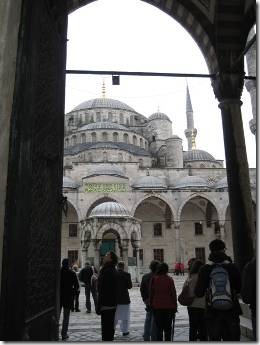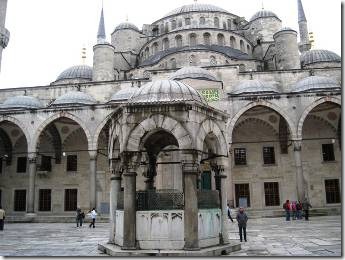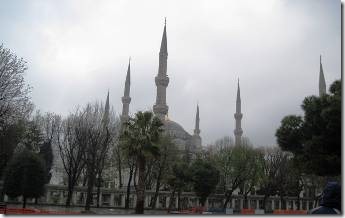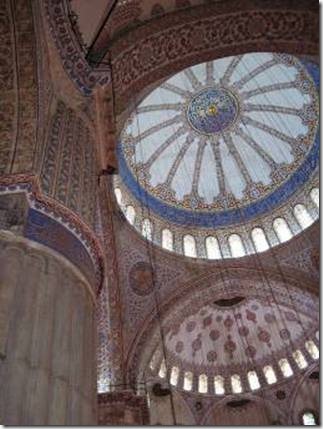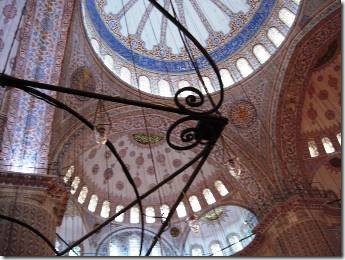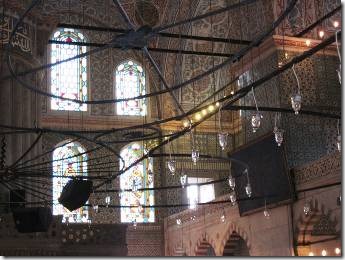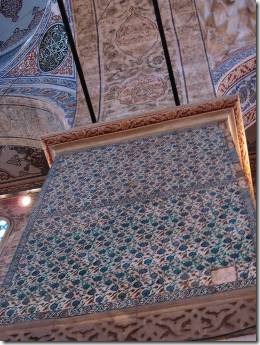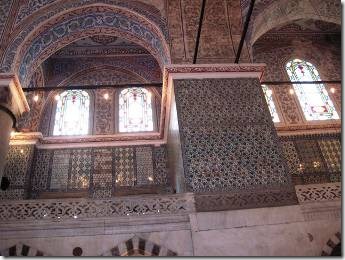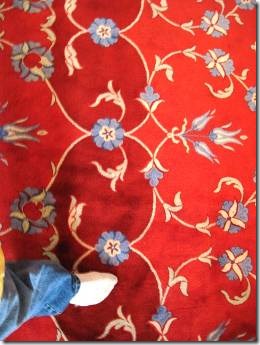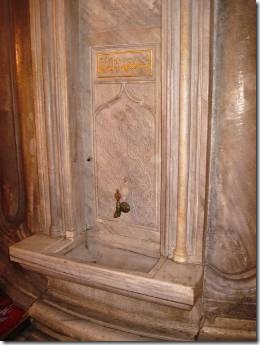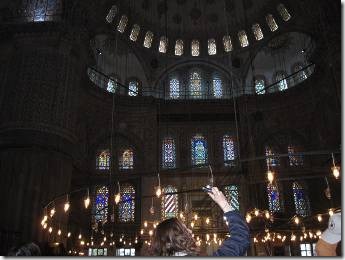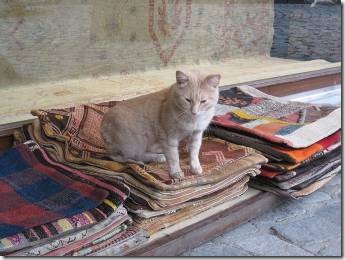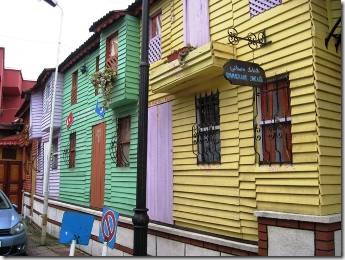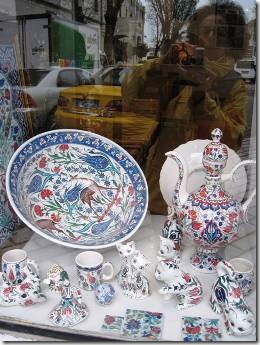Linda, Michael, Randal and I arrived in Marmaris late this afternoon. We left Pamukkale at 10:30 am on a local shuttle to Denizli and then caught the 11:30 bus from Denizli to Marmaris. We arrived in Marmaris almost an hour late because Randal and I got what we had wished for. In Pamukkale we’d seen posters for a Turkish bike race and wished our timing had been better to see some of it. About an hour from Marmaris all traffic was stopped to clear the roads for the bicycle racers! We did get to see them go by but that made us about 40 minutes late. We encountered 2 other stops on the road probably for the same reason though we didn’t see the racers but only police and more jandarms. The race finished on the Marmaris waterfront but we were too late to see it. At first glance Marmaris seems to be a typical seaside resort area. I’m sure it has its charms but I miss the “oldness” of Istanbul. Maybe it’s because with Marmaris comes the confusion of dealing with the tons of paperwork to get Doramac into Turkey and then learning the ropes at the new marina. Randal is looking forward to that part so it’s good that someone is. I will be happy to get onboard and start cleaning her up after her journey. And it will be nice to do our own cooking again though we’ll probably keep eating the wonderful local breads and cheeses.
In the meantime our hotel room is “roomy” and the balcony has a clothesline so we can wash some small stuff and not pay small fortunes to the hotel laundry services. We did some walking this evening but will really start to explore tomorrow. We’ll probably try to visit the marina before Doramac is off loaded to sort things out and get the lay of the land, so to speak. All of the yachts should come off much more quickly and easily than they went on. The BBC Everest is to arrive in Marmaris on April 28th.
To recap, from Istanbul we went to Izmir where we did a day trip to Ephesus. From Izmir we went to Pamukkale and stayed two nights. Both Ephesus and Pamukkale which includes ancient Hierapolis, were fascinating. I’ll tell you about Ephesus next.
Ru
Doramac
The Blue Mosque
Randal and I chose to see the Chora Church and the Dolmabahce Palace (no photos allowed) rather than the Haghia Sophia and the Topkapi Palace. There just wasn’t enough time to see it all and each charged a hefty entrance fee. The Blue Mosque, however, was free and just a five minute walk from our hotel, so one morning I went to see it. Randal chose not to, and instead walked around the small local bazaar and then had coffee at McDonalds. One day we’ll return to Istanbul because it’s a place that calls you back and then we’ll see more and miss more and then have to go back again.
The entry way to the Blue Mosque on a gray rainy day.
“The Blue Mosque was commissioned by Sultan Ahmet I as a rival to Hagia Sophia and designed by architect Mehmet Aga (Aga’s unfortunate predecessor was fired – i.e., executed).
Construction on the mosque began in 1609 and took seven years. Sultan Ahmet died only a year after the completion of his masterpiece, at the age of 27. He is buried just outside the mosque with his wife and three sons.
One of the most notable features of the Blue Mosque is visible from far away: its six minarets. This is very unique, as most mosques have four, two or just one minaret. According to one account, the Sultan directed his architect to make gold (altin) minarets, which was misunderstood as six (alti) minarets.”
“Whatever the origins of the unique feature, the six minarets caused quite a scandal, as the mosque in Mecca also had six minarets. The problem was solved by adding a seventh minaret to Mecca’s mosque.”
http://www.usislam.org/mosques/blue_mosque_istanbul_turkey.htm
It was really hard to get a photo of that included all 6 minarets because one would hide the other from most views. This tilted shot is the best I could do. As we were walking to the Mosque from our hotel Randal asked me if I knew how to find it and then pulled out his map. I just looked at him because the Blue Mosque is the most visible structure in Sultanahmet and you could only miss it if you walked with your eyes closed.
Why it’s called the “Blue Mosque.”
The beautiful blue dome and the hanging glass lights.
The blue tiles help give the Mosque its name.
Turkish carpets on the floor and no shoes were allowed. You were given bags at the entrance to carry them around with you.
Inside the Mosque were two marble was basins, one for men and one for women.
This one was near the women’s prayer area which was behind a screen, separated from the men and the main beautiful hall.
Stained glass windows would have filled the mosque with colored lights on a sunny day.
I left the Mosque and went to explore the bazaar and the back streets where we hadn’t yet walked.
On a street of shops and restaurants this cat had made itself comfortable on a pile of pillow covers.
I wandered the back streets past these colorful buildings on my way to join Randal in the center of Sultanahmet.
A display of porcelain in a shop window of one of the hotels in Sultanahmet.

